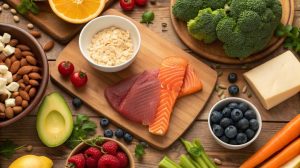The cultivation and consumption of Japanese fruits reveal a profound contradiction at the heart of modern society: while technological advancement has made abundance theoretically possible, artificial scarcity maintains hierarchies that separate those who can afford perfection from those who cannot. In Japan, where the pursuit of excellence has elevated fruit cultivation to an art form, a single melon can cost more than a month’s rent for a working-class family, whilst the same genetic material grows abundantly in fields across the world for a fraction of the price.
The Architecture of Agricultural Inequality
Behind the pristine presentation of Japanese fruit lies a complex system of labour, land, and social stratification that mirrors broader patterns of inequality found throughout developed societies:
- Labour Exploitation
Meticulous care requiring countless hours of hand-pollination and individual fruit wrapping, performed by ageing farmers and seasonal labourers whose compensation bears no relation to final retail value
- Geographical Disparities
Concentration of premium production in specific regions creates rural disadvantage patterns
- Barriers to Entry
Farmers invest decades developing techniques and relationships that cannot be easily replicated
- Social Capital Requirements
Established producers maintain advantages whilst excluding newcomers lacking financial resources and connections
- Historical Inequities
The system benefits those with existing land, knowledge, and market access
The Economics of Perfection
The pricing mechanisms that govern Japanese fruit markets operate according to principles that prioritise aesthetic perfection over nutritional value or sustainable production. Consumer willingness to pay premium prices for flawless appearance has created incentive structures that reward cosmetic quality above all other considerations:
- Visual Standards
Slight blemishes or size variations can reduce value by 80% or more, creating enormous waste
- Gift Economy
Cultural practices around gift-giving drive demand for expensive fruit as status symbols
- Artificial Scarcity
Limited production maintains high prices despite technological capacity for mass cultivation
- Brand Premium
Regional designations and variety names command price multiples similar to luxury goods
- Seasonal Manipulation
Controlled ripening and storage extend premium selling periods beyond natural seasons
These economic dynamics create a two-tiered system where perfect specimens command extraordinary prices whilst cosmetically imperfect fruit, often nutritionally identical, sells for a fraction of the cost or gets discarded entirely.
Labour and the Hidden Costs of Excellence
The human cost of producing premium Japanese fruit remains largely invisible to consumers who encounter only the final, perfectly presented product:
Worker Conditions:
- Precarious Employment: Agricultural workers, many elderly or foreign temporary labourers, perform repetitive, physically demanding tasks
- Seasonal Instability: Workers must relocate between farms following harvest cycles with minimal job security or benefits
- Skill Undervaluation: Specialised knowledge required for premium production takes years to develop yet rarely translates into proportional compensation
Generational Challenges:
- Urban Migration: Younger family members choose urban employment over farming
- Knowledge Loss: Traditional cultivation expertise gradually disappears with an ageing workforce
- Land Pressure: Traditional farming families face mounting pressure as land values increase and urban development encroaches
Cultural Capital and Social Distinction
The consumption of premium Japanese fruit functions as a form of cultural capital that signals social position and aesthetic sophistication. Knowledge about seasonal varieties, proper gifting protocols, and quality assessment becomes a marker of cultural refinement that distinguishes insiders from outsiders.
“The extraordinary prices commanded by Japanese fruits in Singapore reflect not just their quality, but their role as symbols of cultural sophistication and economic privilege in societies where traditional markers of status have become democratised,” observes a sociologist studying consumption patterns among affluent Asian communities.
Environmental Contradictions
The environmental impact of premium Japanese fruit production reveals contradictions between stated sustainability values and actual consumption patterns:
Resource Intensity Factors:
- Energy Consumption: Climate-controlled growing environments require significant electricity and heating fuel
- Water Usage: Intensive cultivation methods often demand more water per fruit than traditional approaches
- Transportation Footprint: Air freight to international markets generates emissions far exceeding local alternatives
- Chemical Inputs: Achieving cosmetic perfection may require pesticide applications beyond nutritional necessity
Global Market Dynamics
The international market for Japanese fruit operates within broader patterns of global inequality:
- Resource Allocation: Wealthy consumers in developed countries command agricultural resources from around the world
- Export Prioritisation: Most perfect specimens get reserved for international sales whilst domestic consumers receive lower grades
- Market Influence: Singapore’s position as luxury import hub demonstrates how affluent populations reshape agricultural production in distant locations
- Food Security Impact: Export focus mirrors broader patterns where export crops receive priority over local food security needs
Technology and Tradition
Modern Japanese fruit production combines traditional knowledge with cutting-edge technology in complex ways:
- Enhanced Efficiency: Advanced cultivation techniques can increase yields and reduce environmental impact
- Access Barriers: Expensive technology often remains inaccessible to smaller producers
- Luxury Focus: Current applications often enhance luxury characteristics rather than addressing broader food system challenges
- Hierarchy Reinforcement: Technologies that could democratise high-quality production instead often reinforce existing inequalities
Alternative Models and Future Possibilities
Some producers experiment with alternative approaches that prioritise sustainability, worker welfare, and broader accessibility whilst maintaining quality standards. Community-supported agriculture, cooperative ownership models, and direct-to-consumer sales create possibilities for more equitable distribution of both costs and benefits in fruit production.
Conclusion
The story of Japanese fruit illuminates broader questions about how societies allocate resources, reward labour, and define value in an age of technological abundance. The same innovations that make perfection possible could theoretically provide high-quality nutrition to many more people at much lower costs, yet market structures maintain artificial scarcity that serves the interests of producers and affluent consumers rather than broader social welfare.
The choices made around agricultural production and consumption reflect deeper values about equality, sustainability, and the kind of society we wish to create. Understanding these dynamics becomes essential for anyone seeking to comprehend the complex relationships between agriculture, culture, and social justice that shape our modern food systems, particularly in markets like Singapore, where the global trade in luxury Japanese fruits continues to flourish.







More Stories
Home Cooking Made Easy: Tasty Meals You Can Cook Today
5 Different Types of Restaurants You Should Visit Once
Top Macro-Friendly Meal Delivery Services in Clearwater